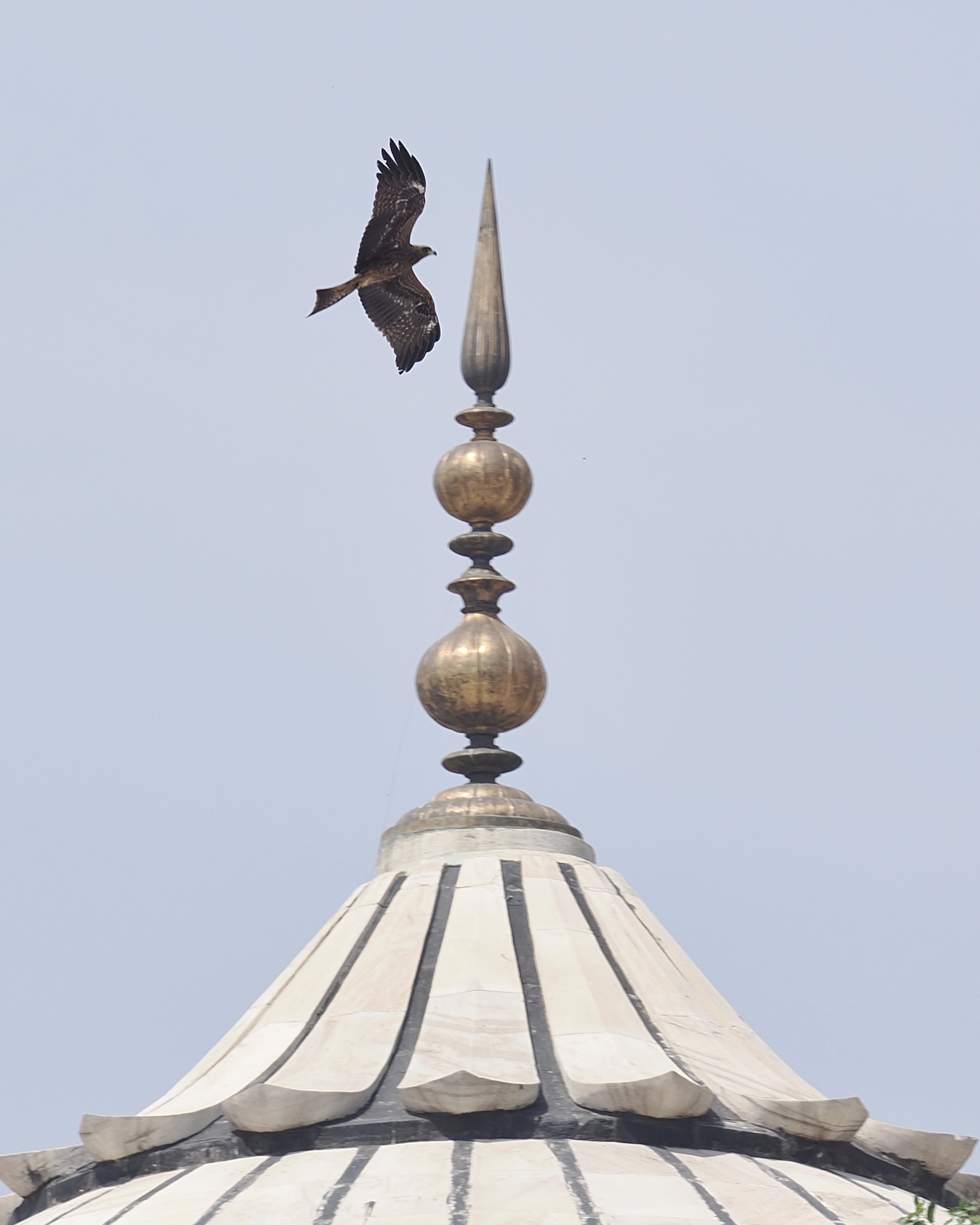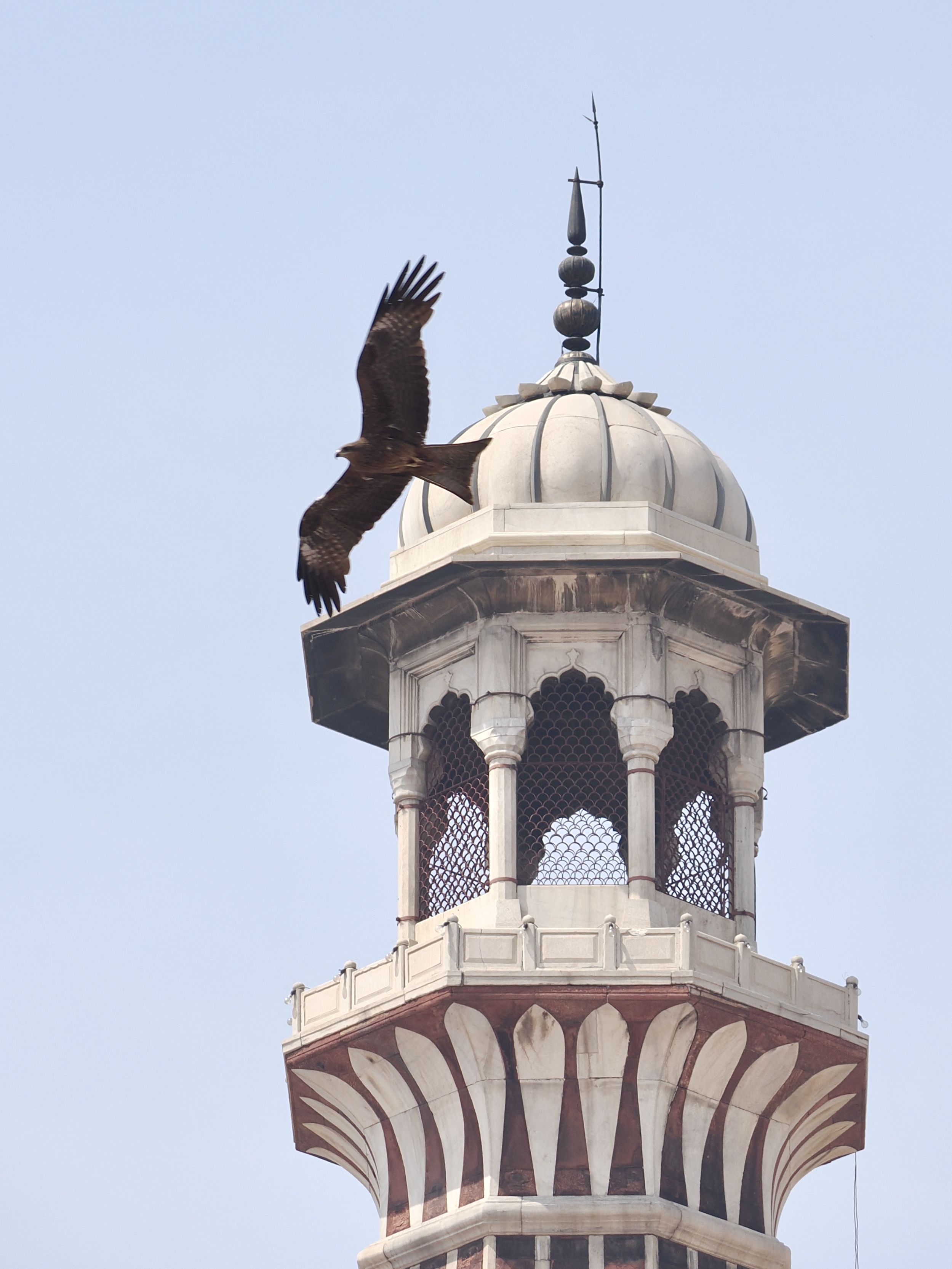Q: who usually rules the skies over the Indian subcontinent’s megacities?
A: Milvus migrans – black kites.
One of the world’s most abundant raptor species (possibly, the most abundant) has proved very adept at taking advantage of the “rubbish” discarded by urban humans.
If one is almost anywhere within a big Indian city, one needs no bird-watching expertise to see black kites; simply look up, and there they are!
”Holy” places are no exception…

The internet currently abounds in hugely-contradictory accounts of how very well – or how very poorly – India’s black kites are now faring.
From what I can glean, it would appear that population numbers frequently rise and fall (so it is hard to work out what is the actual trend) and that cities pose a variety of potentially lethal threats to black kites…and rich opportunities.
Delhi’s prodigiously-polluted air is not beneficial to any bird or mammal.
”Opportunities” to be poisoned by various other means are surely abundant, too.
Delhi’s already-prodigious heatwaves have “excelled” themselves in recent years; my (not necessarily correct) hunch is that “climate change” is the major factor, rather than urban heat “island” effect.
(having visited Delhi a number of times over more than three decades, I have noticed that in recent years, at least the “established” parts of this particular megalopolis appear to have gained tree-cover)
Birds – kites included – fall out of the skies during Delhi heatwaves; not a few die, although benign human intervention does “save” some of them.
I am in no position to know whether – in nett terms – things are looking “up” or “down” for urban India’s black kites.
I do know, however, that in 2024 it is extremely easy to see a lot of them.,
